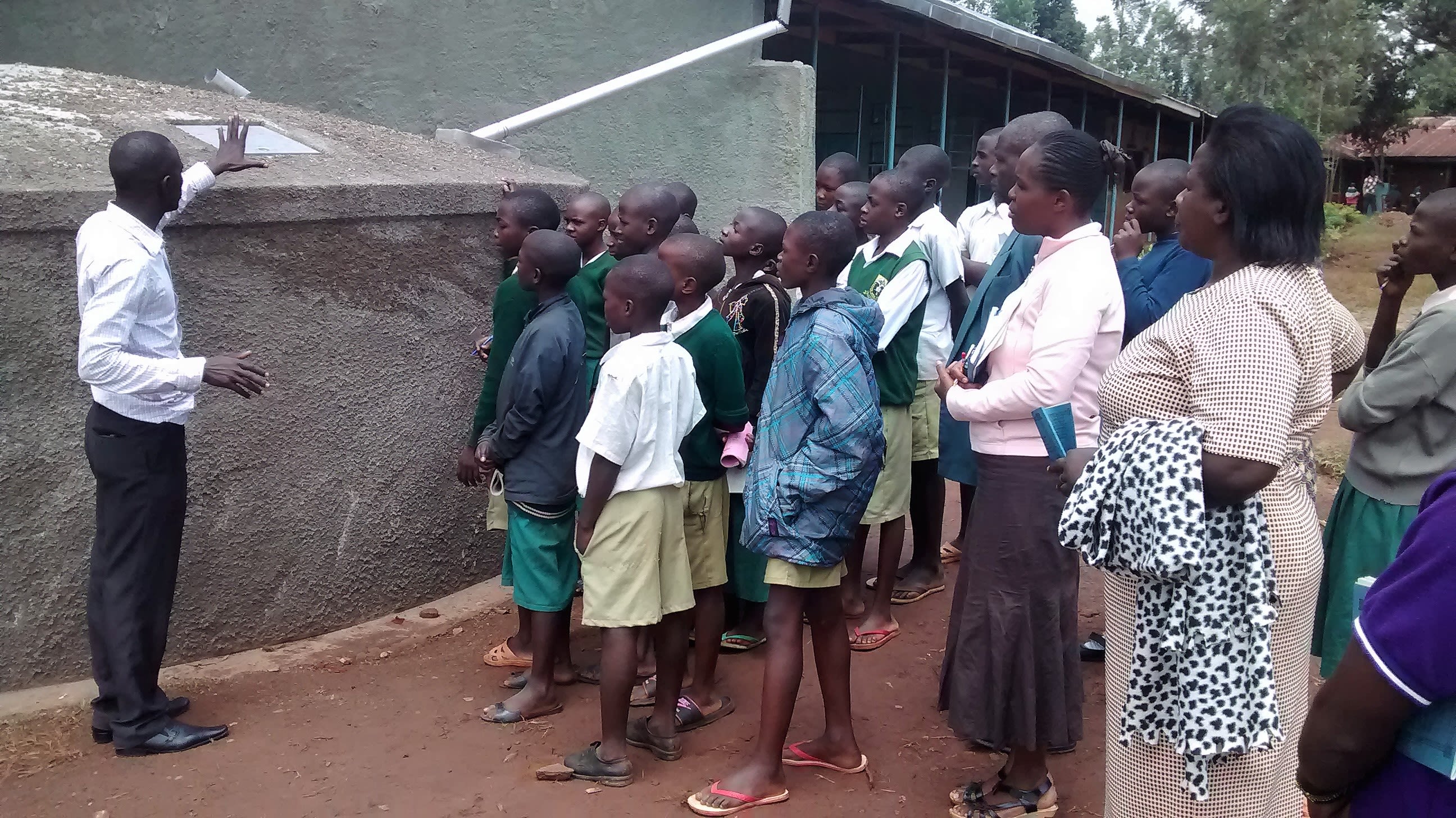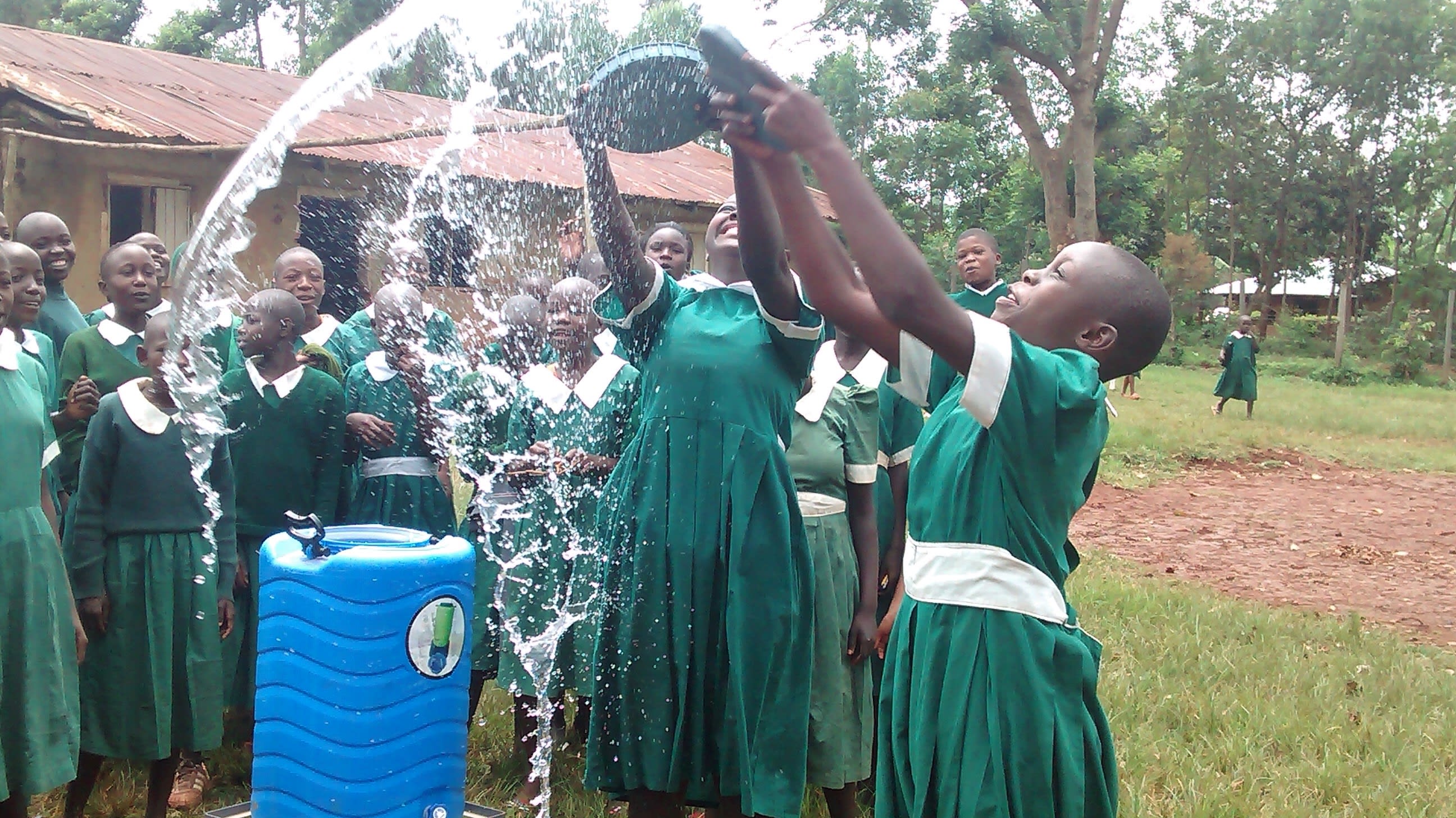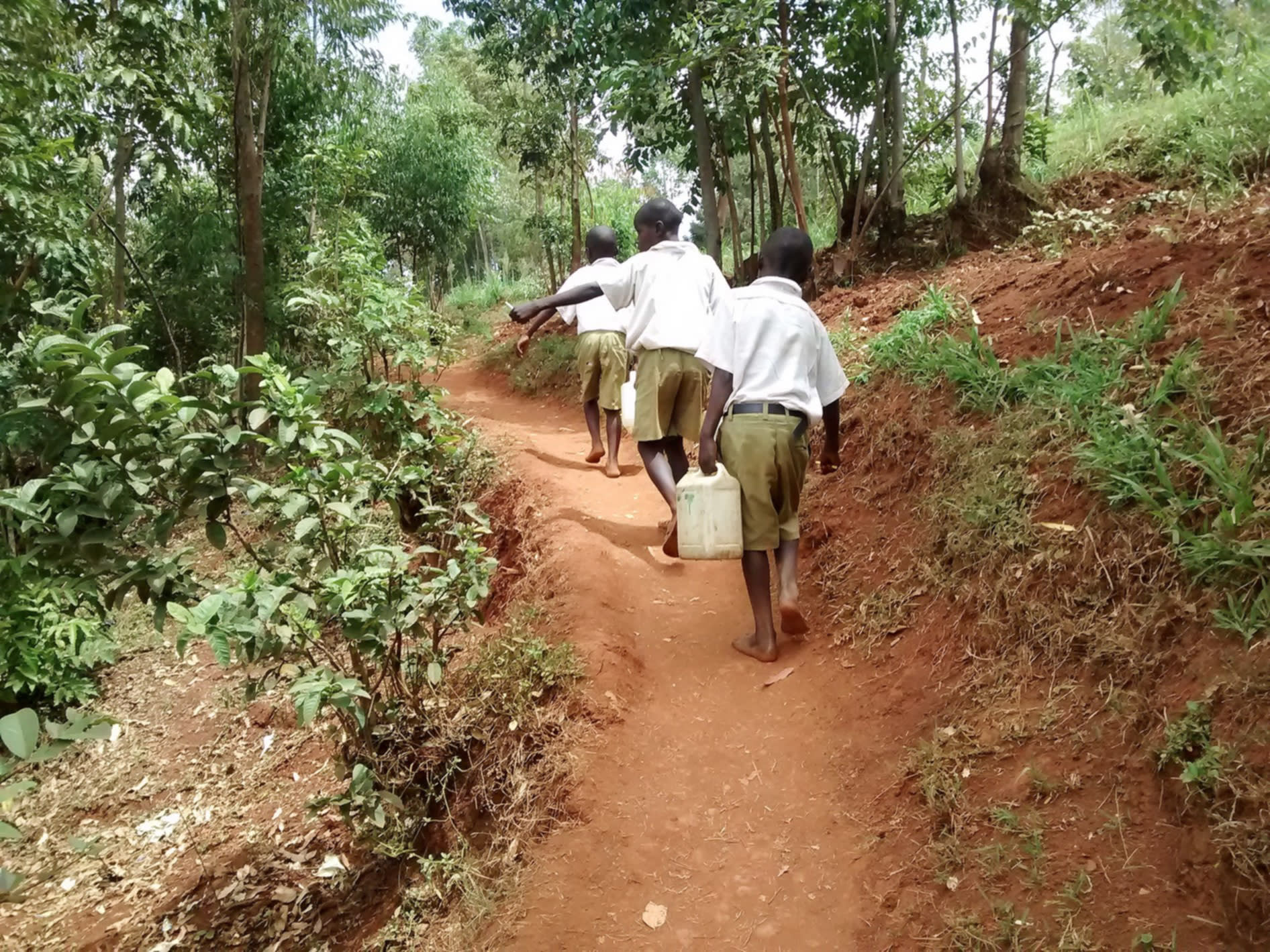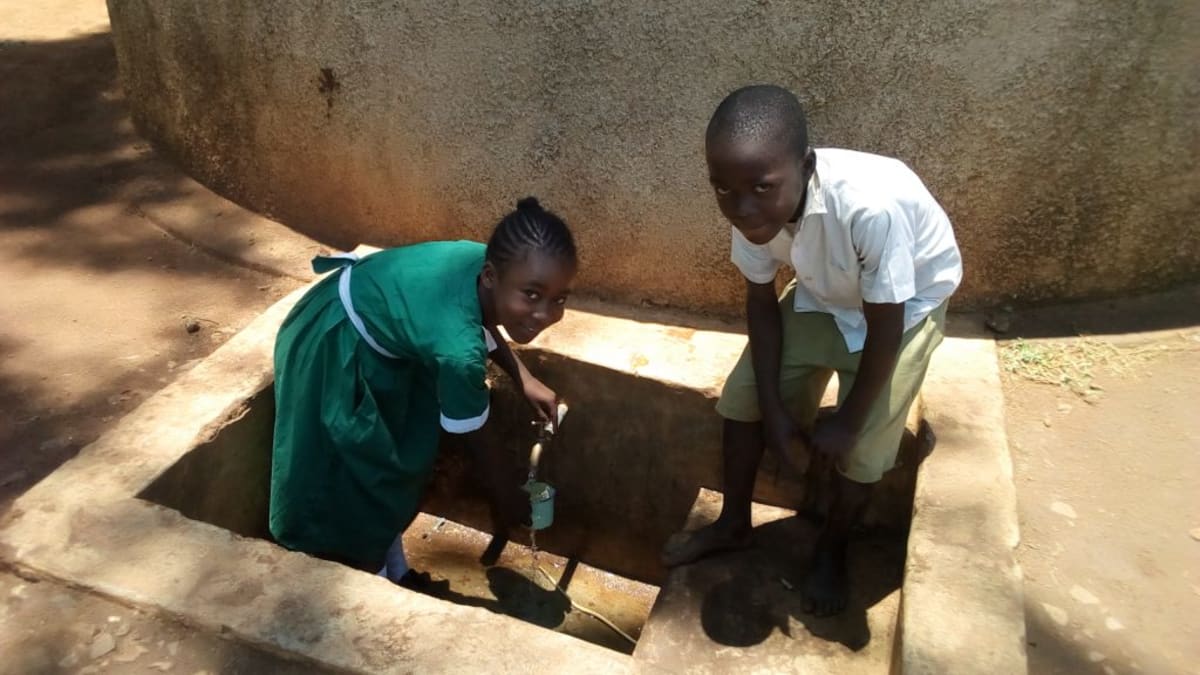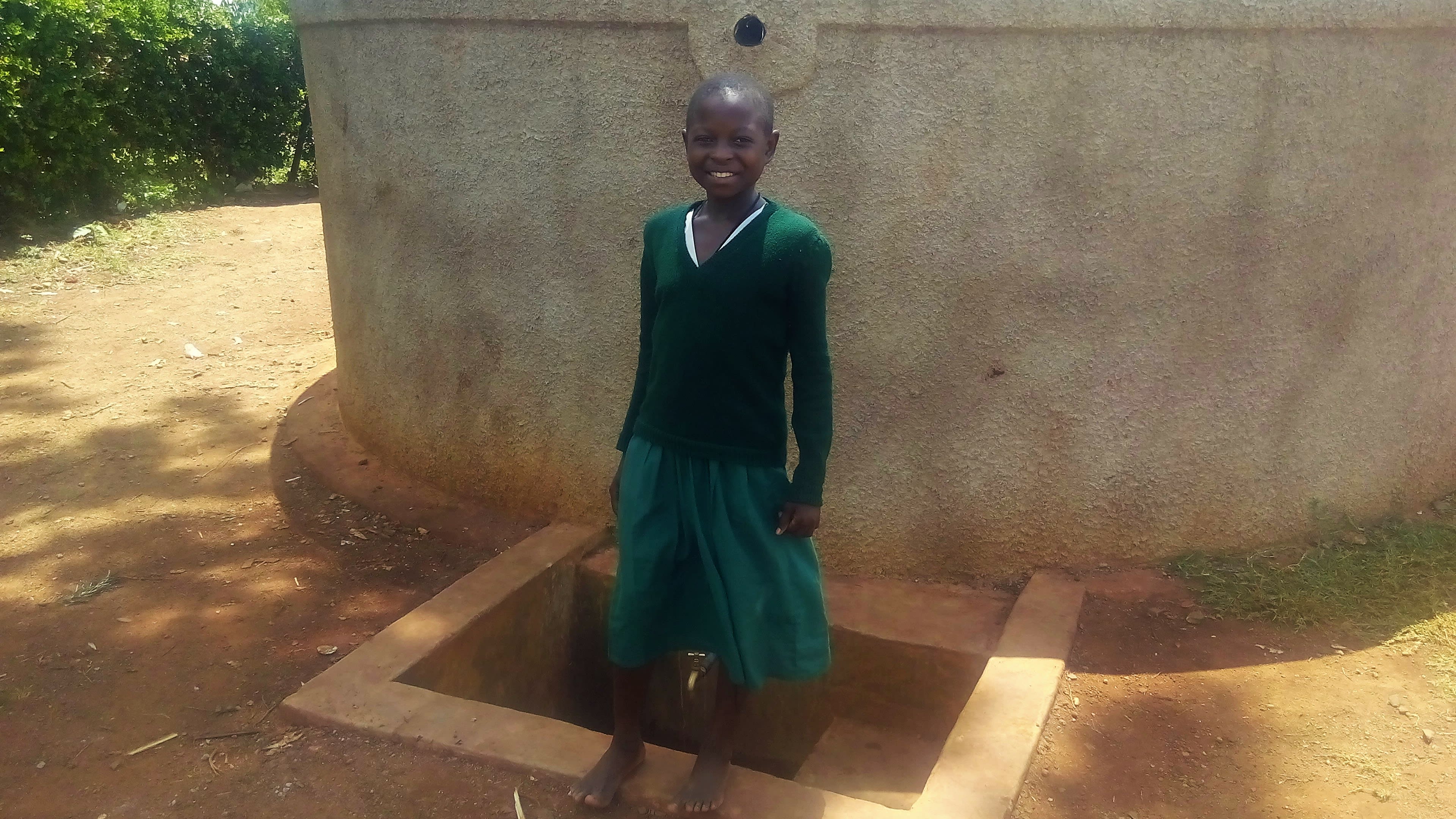This project is a part of our shared program with Western Water And Sanitation Forum (WEWASAFO). Our team is pleased to directly share the below report (edited for clarity, as needed).
Welcome to the School
Exactly 49 years ago the Banyore people of Esibuye Village were deeply convinced that the best thing to offer their future generation was not only to tell tales of Kenya's struggle for independence, but also to put up a school that would guarantee them self-sufficient as individuals. The idea was later backed by the Africa Interior Church (AIC) that became the school's official sponsor. Elders sat down and deliberated on the matter, and a few people agreed to vacate part of their land as a donation to the school.
Since then, the growth of the school has been very slow. They still lack an administration block and lack enough classrooms for pupils; in fact, a class was being held outside when we visited. This slow growth is due to the community's poverty. Families can rarely pay development fees because most parents struggle in running stalls in the nearby Esibuye Market. The school headmistress, Mrs. Esther Asitiba says "Parents have been allowed to pay school fees in forms of consumables such as chickens, firewood, cereals etc. so that their children can be retained in school to learn."
To these struggles is added the thirst for water and the hard-pressing shortages of sanitation facilities in the school. The school has a total population of 554 comprised of 55 pre-primary children, 480 primary children, 16 teachers and three support staff. (Editor's Note: While this many people may have access on any given day, realistically a single water source can only support a population of 350-500 people. This community would be a good candidate for a second project in the future so adequate water is available. To learn more, click here.)
Despite the challenges, many girls and boys from Esibuye Primary School have secured admission in some of the academic giant secondary schools of Kenya such as Bunyore Girls National School, Emusire Boys County School, Keveye Girls County School to name but a few.
This school happens to be along the Luanda-Kakamega route that we commonly use on our way to the field or to the office every Monday. We saw the pupils from this school carrying water every morning on their way to school. We then contacted local leadership to learn more about the water and sanitation situations at Esibuye Primary School.
Water Situation
The school gets her water primarily from Nyabera Spring, located one kilometer away from the school across the busy tarmac road. When the school runs out of water during the day, that's where classes are sent. Children also carry water in the morning as they come from home. All the water fetched by students is poured in a 1000-liter plastic tank.
Because water is brought from different sources, it is very unsafe to be used for drinking purposes. After drinking, reports of typhoid, stomachaches, and diarrhea are reported. Many students either stay home or return home sick, and the student body is at great risk of a cholera outbreak.
Sanitation Situation
Apart from water the school also has shortages of sanitation facilities such as hand-washing stations and latrines. The government is the only group that has lent a helping hand, in 2014 and 2016, by building two classrooms and doing renovations.
One commendable thing about Esibuye is the great hygiene of the girls’ latrines. Even though some of them were almost full, the latrine floors were clean and free of waste. It was over in the boys' section where things got messy, due to the lack of a urinal point and the scrabble to use only a few latrine doors among 315 boys.
There are no hand-washing stations for students to use after the latrines. Sanitation Teacher Jane Ambiyo thinks, "Generally, the health status in the school is the exact replica of what this village is like. We have shortages of latrines both for girls and boys. The ones we currently have are almost full. The situation is worsened by lack of substantive source of drinking water for this big population, not to mention hand-washing stations."
Plans: Hygiene and Sanitation Training and Hand-Washing Stations
Training will be held for two days. The facilitator will use PHAST (participatory hygiene and sanitation transformation), ABCD (asset-based community development), CTC (child to child), lectures, group discussions, and handouts to teach health topics and ways to promote good practices within the school. The CTC method will prepare students to lead other students into healthy habits, as well as kickstart a CTC club for the school. This CTC club will oversee the new facilities, such as hand-washing stations, and make sure they are kept clean and in working condition. The two hand-washing stations will be delivered to the school, and the club will fill them with water on a daily basis and make sure there is always a cleaning agent such as soap or ash.
Plans: VIP Latrines
Two triple-door latrines will be constructed with local materials that the school will help gather. Three doors will serve the girls while the other three serve the boys. And with a new source of water on school grounds, students and staff should have enough to keep these new latrines clean.
Plans: Rainwater Catchment Tank
A 50,000-liter rainwater catchment tank will help alleviate the water crisis at this school. The school will also help gather the needed materials such as sand, rocks, and water from the spring for mixing cement (students have already started helping). Once finished, this tank can begin catching rainfall that will be used by the school’s students and staff. Students will no longer have to leave their school in search of water.
We and the school strongly believe that with this assistance, standards will significantly improve. These higher standards will translate to better academic performance!

 Rainwater Catchment
Rainwater Catchment
 Rehabilitation Project
Rehabilitation Project














